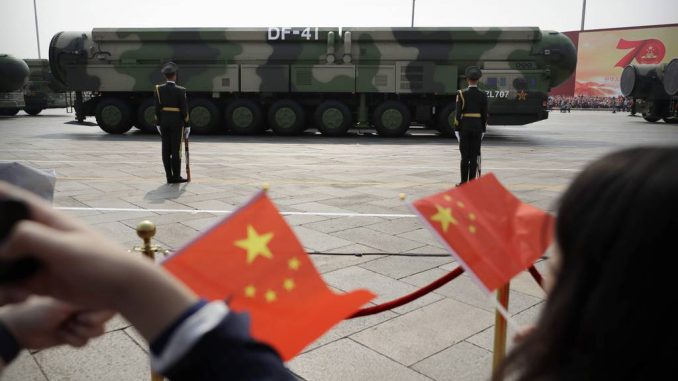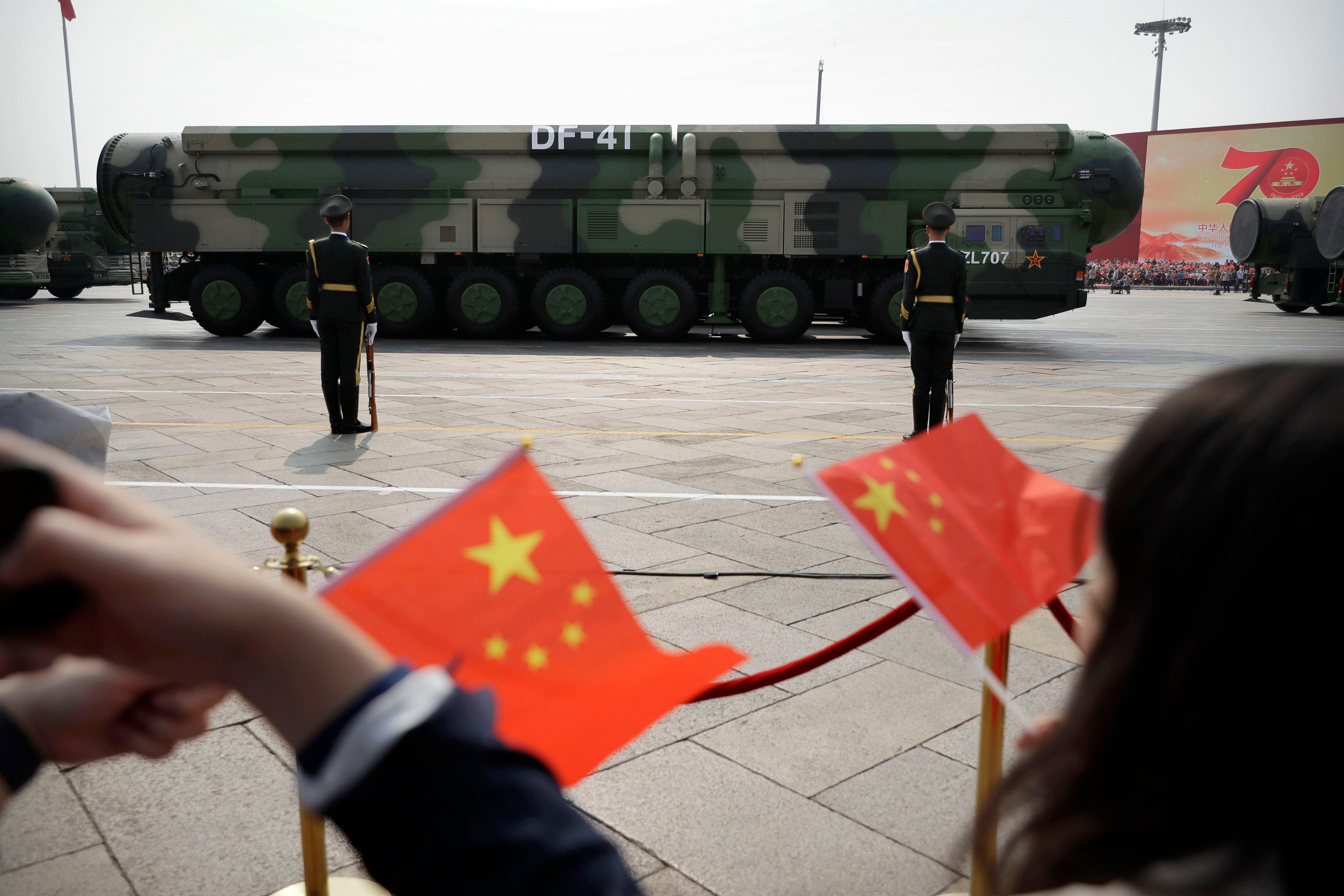

Updated Nov. 4, 2021, at 10:32 a.m. ET with additional information on China’s nuclear capabilities.
MELBOURNE, Australia, and WASHINGTON — China is expanding its nuclear force much faster than U.S. officials predicted a year ago, highlighting a broad and accelerating buildup of military muscle designed to enable Beijing to match or surpass U.S. global power by midcentury, according to a Pentagon report released Wednesday.
The Defense Department’s 2021 report, commonly referred to as the “China Military Power Report,” said that “the accelerating pace” of China’s nuclear expansion “may enable” it to have “up to 700 deliverable nuclear warheads by 2027,″ and that China “likely intends to have at least 1,000 warheads by 2030″.
The United States, by comparison, has 3,750 nuclear weapons and has no plans to increase that number. As recently as 2003, the U.S. total was about 10,000. The Biden administration is undertaking a comprehensive review of its nuclear policy and has not said how that might be influenced by its China concerns.
The report does not suggest open conflict with China but it fits an emerging U.S. narrative of a People’s Liberation Army intent on challenging the United States in all domains of warfare — air, land, sea, space and cyberspace. Against that backdrop, U.S. defense officials have said they are increasingly wary of China’s intentions with regard to the status of Taiwan.
“The PLA’s evolving capabilities and concepts continue to strengthen [China’s] ability to ‘fight and win wars’ against a ‘strong enemy’ — a likely euphemism for the United States,” the report said, adding that it makes China more capable of coercing Taiwan, the self-ruled island that China claims as its territory.
Wednesday’s report is the latest reminder to Congress, already leery of Beijing’s military ambitions, that the Pentagon’s frequent promises to focus more intently on countering China have moved only incrementally beyond the talking stage. The Biden administration is expected to take a new step by following through on its announcement in September of plans to increase the U.S. military presence in Australia, in addition to a controversial decision to help Australia acquire nuclear-powered submarines.
The report also flagged the possibility of China having already established a nascent “nuclear triad” with the development of a nuclear capable air-launched ballistic missile and improvements to its land- and sea-based nuclear capabilities.
The Pentagon report was based on information collected through December 2020 and so does not reflect or mention Chairman of the Joint Chiefs of Staff Gen. Mark Milley’s expression of concern last month about Chinese hypersonic weapon tests over the summer that he said came as a troublesome surprise. Wednesday’s report only referred to the widely known fact that China had fielded the DF-17 medium-range ballistic missile, equipped with a hypersonic glide vehicle designed to evade American missile defenses.
In remarks shortly before the report’s release Wednesday, Milley told the Aspen Security Forum that the hypersonic missile test and other Chinese advances are evidence of what is at stake for the world. “We are witnessing one of the largest shifts in global and geostrategic power that the world has witnessed,” he said.
The airborne launch platform of this Chinese triad is the Xi’an H-6N bomber, a derivative of the H-6K that is optimized for long-range strikes and features a modified fuselage that allows it to externally carry an air-launched ballistic missile that maybe nuclear-capable.
The H-6N also possesses air-to-air refueling capability, the first variant of the type able to do so and thereby providing it greater range compared to other Chinese bombers. The report assesses that the People’s Liberation Army Air Force has operationally fielded the H-6N bomber as of 2020 and is “very likely” to be “developing tactics and procedures to conduct the PLAAF nuclear mission.”
China’s main nuclear delivery system is still the growing force of ballistic missiles in its arsenal that are capable of carrying nuclear or conventional warheads. The Pentagon report said China has “commenced building at least three solid-fueled [intercontinental ballistic missiles] silo fields, which will cumulatively contain hundreds of new ICBM silos” — echoing earlier news reports based on open-source satellite imagery
The Pentagon report also said sources indicate a new long-range DF-27 ballistic missile with an officially stated range of 5,000-8,000 kilometers (3,100-5,000 miles) is under development. However, it is unclear if this is referring to the Chinese “intercontinental” glider system that was previously reported.
The naval leg of China’s triad is also advancing, with the report noting that development of the Type 096-class ballistic missile submarine is continuing, and that when it is commissioned, the class is expected to serve alongside six older Type 094s.
The ballistic missile submarine fleet is expected to reach eight boats by 2030 with the Type 096 in service. The submarine will be equipped with JL-3 submarine-launched ballistic missiles, which would enable China to target the U.S. mainland with nuclear strikes from within China’s littoral waters.
These ballistic missiles will receive up-to-date targeting information from China’s growing fleet of reconnaissance and remote sensing satellites, that is estimated to number around 200, up from “more than 80″ in last year’s report.
However, anti-submarine warfare in open waters remains an Achilles’ heel for the Chinese military. The report acknowledged that China is aware of this shortfall and is improving its anti-sub warfare capabilities and training to better protect its aircraft carriers and ballistic missile submarines even as its naval force is projected to reach 460 ships by 2030.
The basis of the Pentagon’s prediction that China will vastly increase its nuclear arsenal is not spelled out in Wednesday’s report. A senior defense official who briefed reporters in advance of the report’s public release, and thus spoke on condition of anonymity, said the forecast reflects several known developments, such as China’s addition of a nuclear bomber capability, as well as public statements in Chinese official media that have made reference to China needing 1,000 nuclear weapons.



Be the first to comment